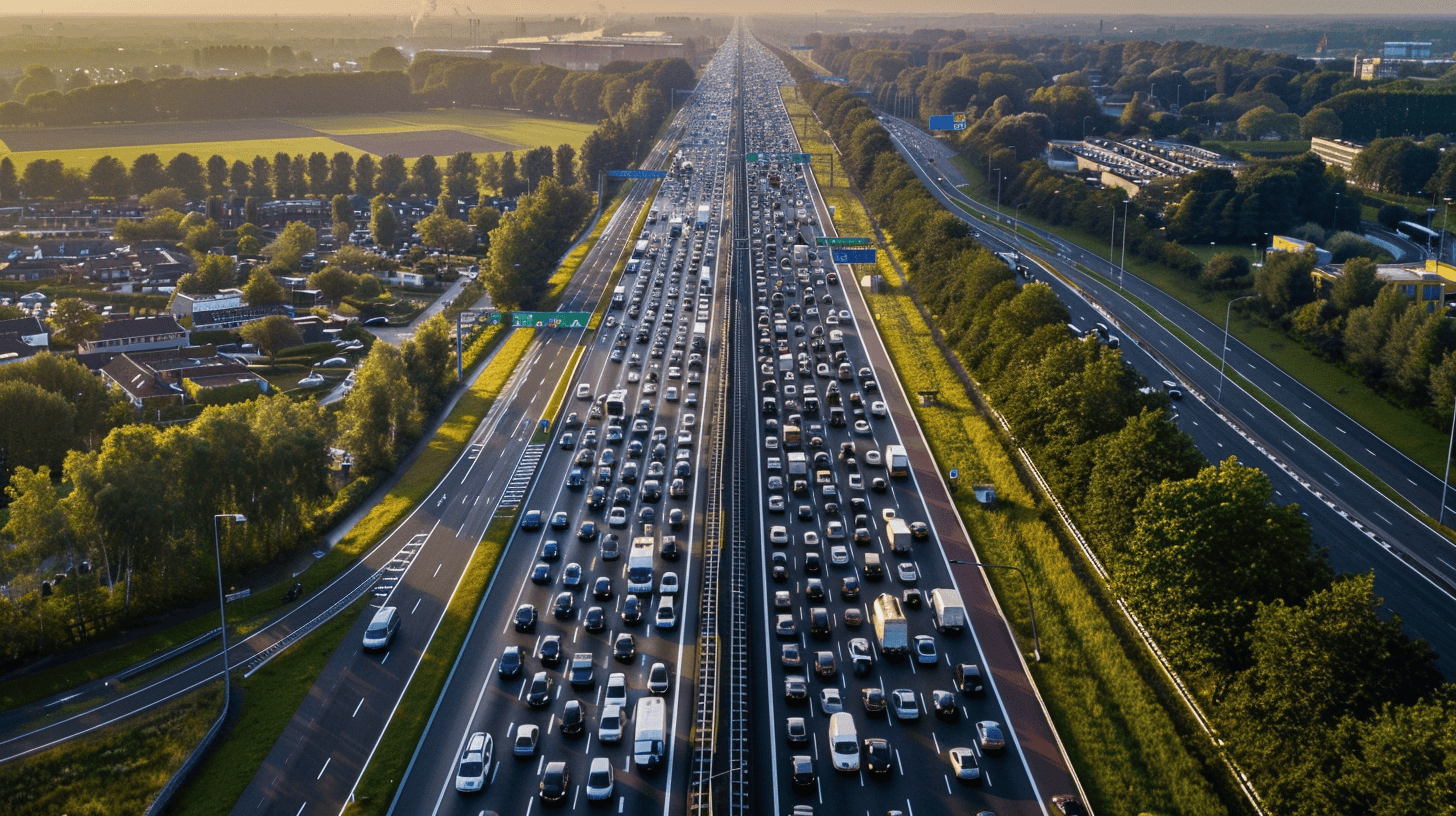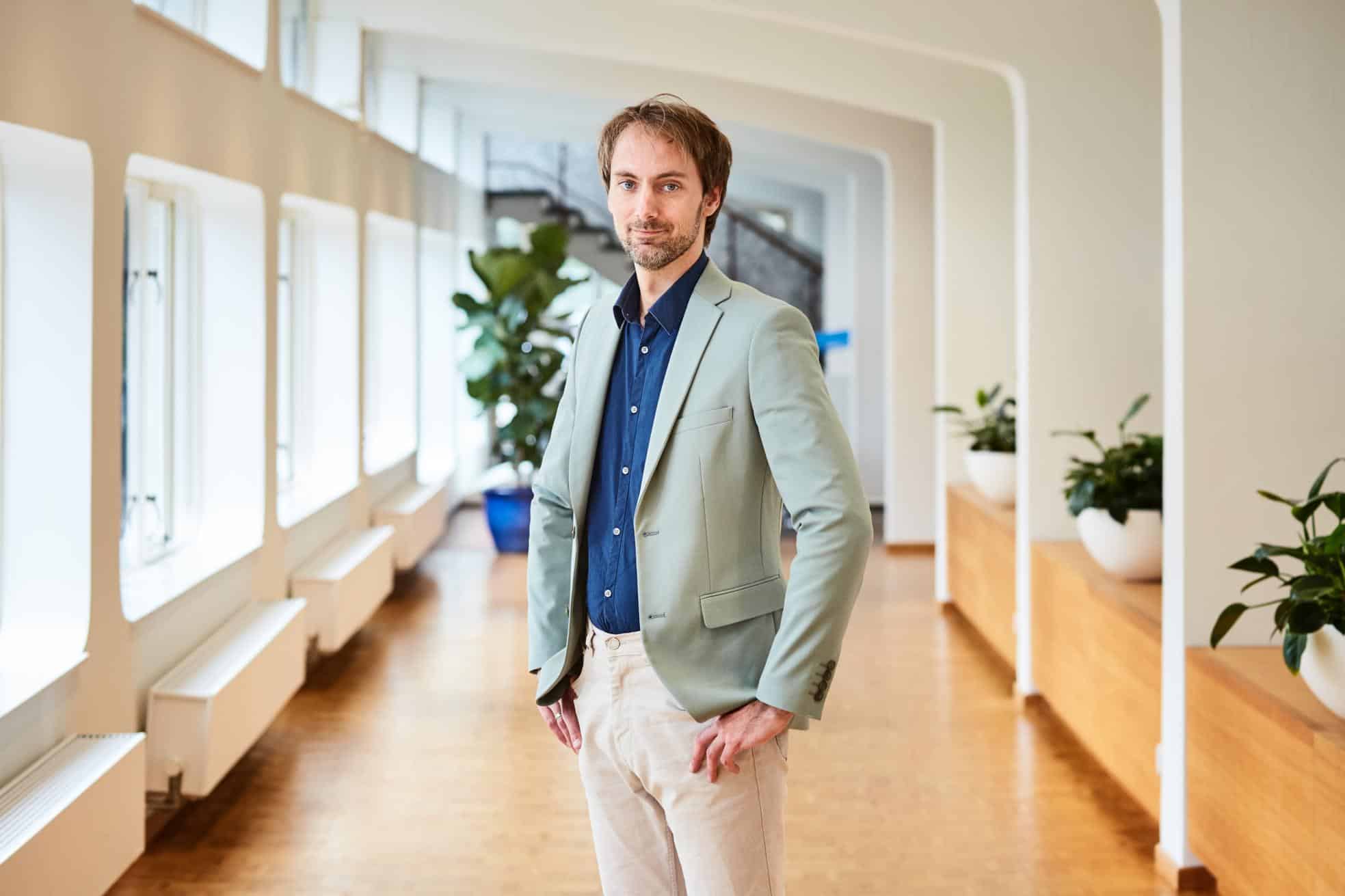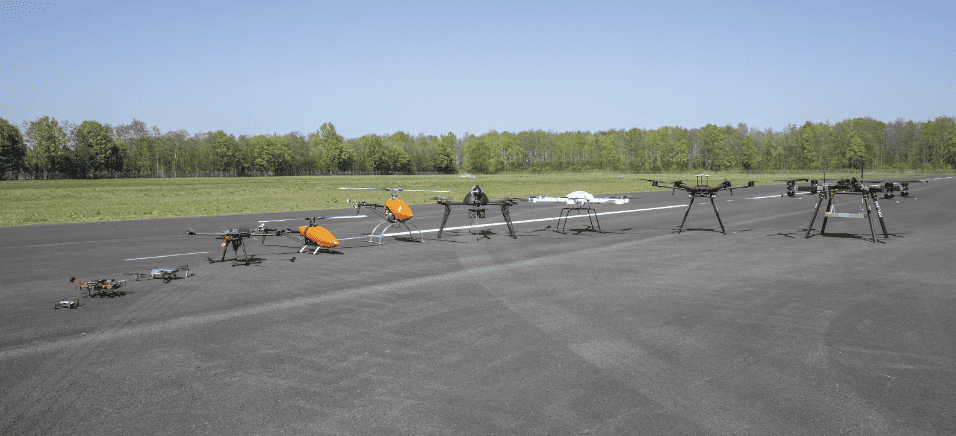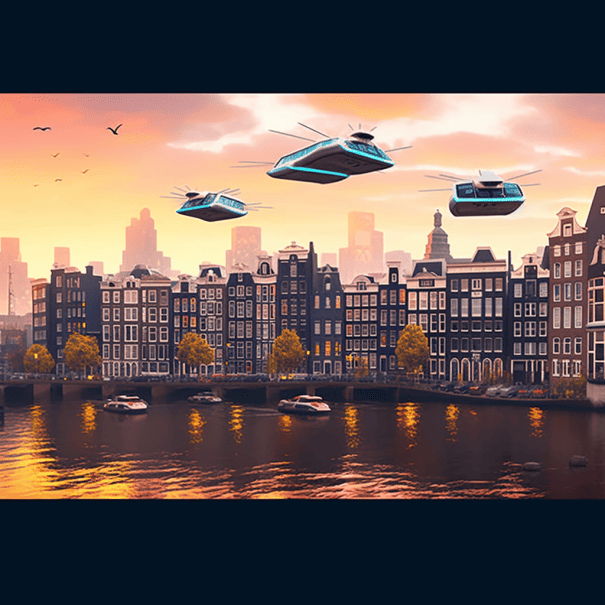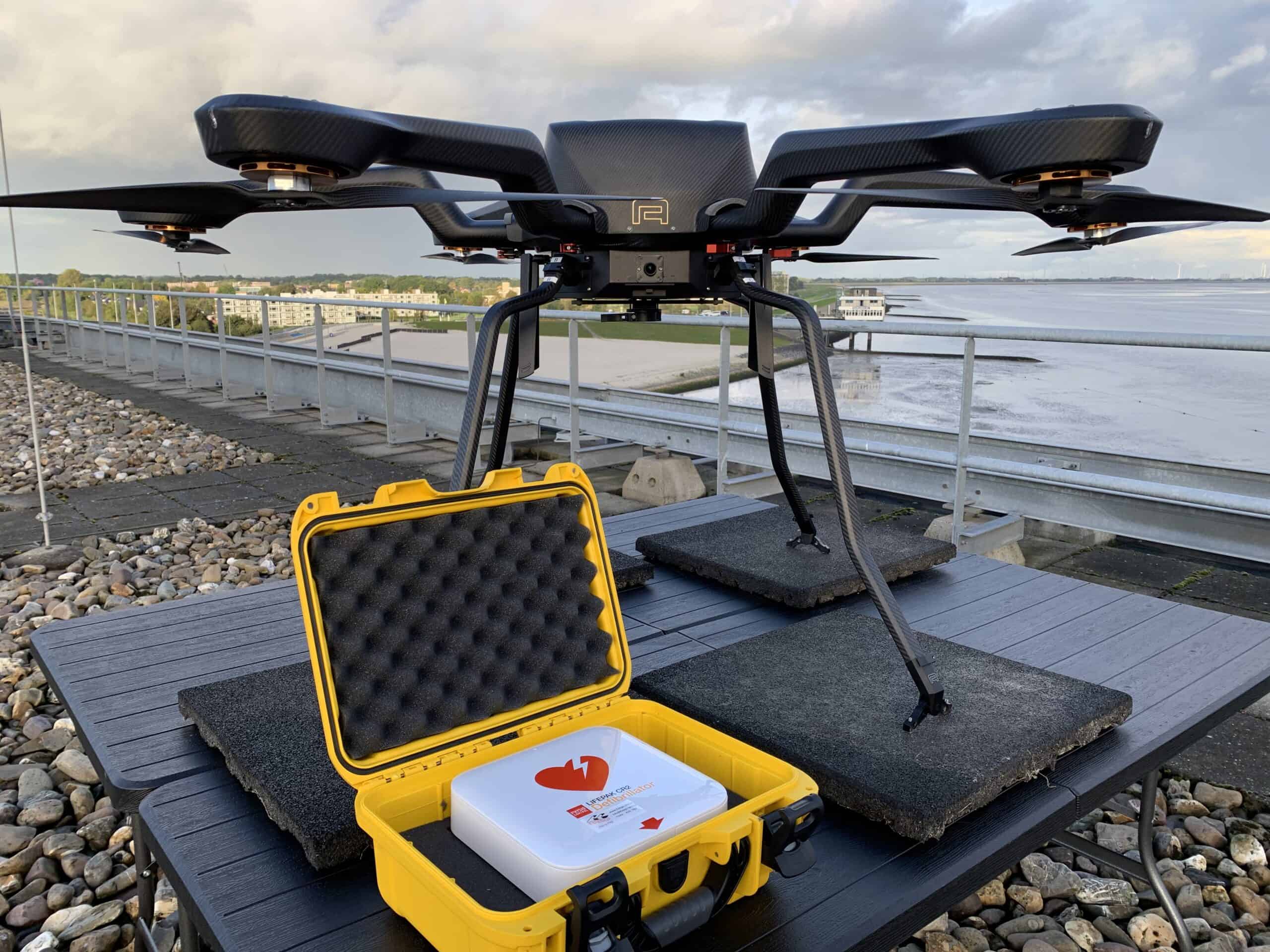
It was quiet on Dutch roads during the corona pandemic. But recently the number of traffic jams has risen sharply again. This is not only annoying for those stuck in traffic jams, but it also poses a major obstacle to the ability to act quickly and effectively during a medical emergency. “Airspace is going to be a godsend for the medical sector,” says Egbert Swierts, co-founder Drone Delivery Services BV. Recently, in cooperation with the Dutch Province of Groningen and Hive Mobility, the company carried out test flights with an autonomous drone that transported an AED (or “heart starter”) in the port area of Delfzijl.
Every second counts when someone is stricken by heart failure. Stalled traffic in congested areas is therefore a thorn in the side of medical personnel. But being able to act quickly in areas located further away, such as a business park, can also pose a challenge. AEDs are being installed in e.g. port areas more and more, but they are by no means always easily accessible. Take business closing times into account, for one thing.
A pre-programmed flight
Swierts firmly believes that air transportation of an AED (a portable device used to resuscitate a person suffering a cardiac arrest) can save lives in such instances. To prove it, Drone Delivery Services BV, a start-up from the northern Netherlands that focuses on transporting goods with drones, transported an AED by drone from the Groningen Seaports office to the nearby MuzeeAquarium museum. The drone in this pilot flew a fully pre-programmed flight. “In the future, we want to make this demand-dependent. Think, for example, of flights to the precise location of callers. These types of drones will in those cases be monitored from a control center,” Swierts said. The tests are a follow-up to a Swedish study, which revealed that AEDs by drone get to the scene as much as two minutes faster than is possible by ambulance.
Technical issues
Port areas are ideally suited for transportation by drone. Swierts: “On business park roofs there is often an area space left where a drone could potentially be stationed. The drone is not in anyone’s way here and is able to take off and land safely.” While conducting test flights, the start-up especially wanted to find answers to technical issues. “How does a drone react when it takes off at altitude and then has to land lower? And can we guarantee flight safety? The flight at the port site was a first step for us to find answers to these matters.”
AED drop
The use of drones during emergencies can be fraught with risks if, for example, the interaction with bystanders is not given proper consideration. A drone’s rapidly spinning propellers can cause injuries. “This is why we are now exploring whether the AED can be lowered down by cable or a winch,” Swierts continued. “The drone then keeps on flying, which keeps any potential dangers up in the air. When the AED is uncoupled, the drone flies back to the base station.”
In addition to fine-tuning the technology, the use of drones such as those on the port grounds is being assessed to see if it fits in with the legal framework. “We believe that being able to operate demand-dependent AED drones will still need at least a few more years of further development.”

Even more applications
The test flights with the AED are part of a more wide-ranging goal that the northern Dutch start-up has in mind, which involves harnessing airspace to enable transportation in a smart and sustainable way. “We are initially concentrating on life-saving operations and (emergency) deliveries of medical products. By doing that, we also hope to make strides in terms of social acceptance. But obviously there are still plenty of other applications that can be considered. Take parcel transport, for instance. I expect that in the future, drones will have considerable social value as a means of transportation.”
For the Province of Groningen, driver and partner of autonomous transport for all modes of transport, the project is a step in the right direction to take autonomous aerial transport to the next level within the province. In recent years the province has conducted tests with self-driving buses as well as tests with drones.





